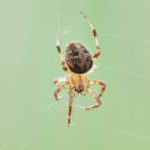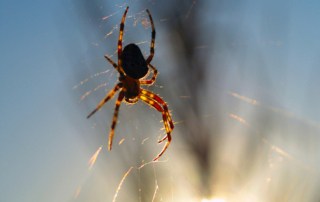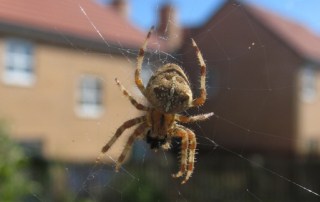Votre panier est actuellement vide !

The spider
– The spider has 4 pairs of legs. (8 legs) – Its body divided into 2 parts – Its mouth appendages: called pedipalps and chelicerae – They are very variable in size. a few mm long to several cm.
Latin Name: Aranea
Description:– The spider has 4 pairs of legs. (8 legs)- Its body divided into 2 parts.- Its oral appendages: are called pedipalps and chelicerae.- They are very variable in size. from a few mm long to several cm.
Reproduction: The male spider weaves a small web and deposits his sperm.He then leaves in search of females.When he finds one, he deposits his sperm in his seminal receptacles.The eggs are then followed in small capsules or bags.Depending on the species, there may be 2 to 1000 eggs per capsule.The duration of development is variable and the young will have to move several times before becoming adults.
Habits: Most spiders spin webs to catch their prey.Some others hunt their prey like the Wolf spider.These spiders are often able to jump very far.It kills its victim with venom and it then devours it.It often hides near light sources because other insects are attracted there. The spider can be found in almost any environment, even homes.
Prevention: Sometimes putting screens on windows and vents can help but they enter through several openings in the structure. It is not easy to get rid of them, sometimes an external treatment may be necessary.You can avoid attracting them by turning off street lights at night and turning off the lights in the house at night. Spider treatments are used to break the spider’s reproductive cycle and control their population. Additional treatments may be necessary depending on the environment of the house and the weather. Exterior treatments must be done by experts as they must respect governmental standards and municipal regulations.

